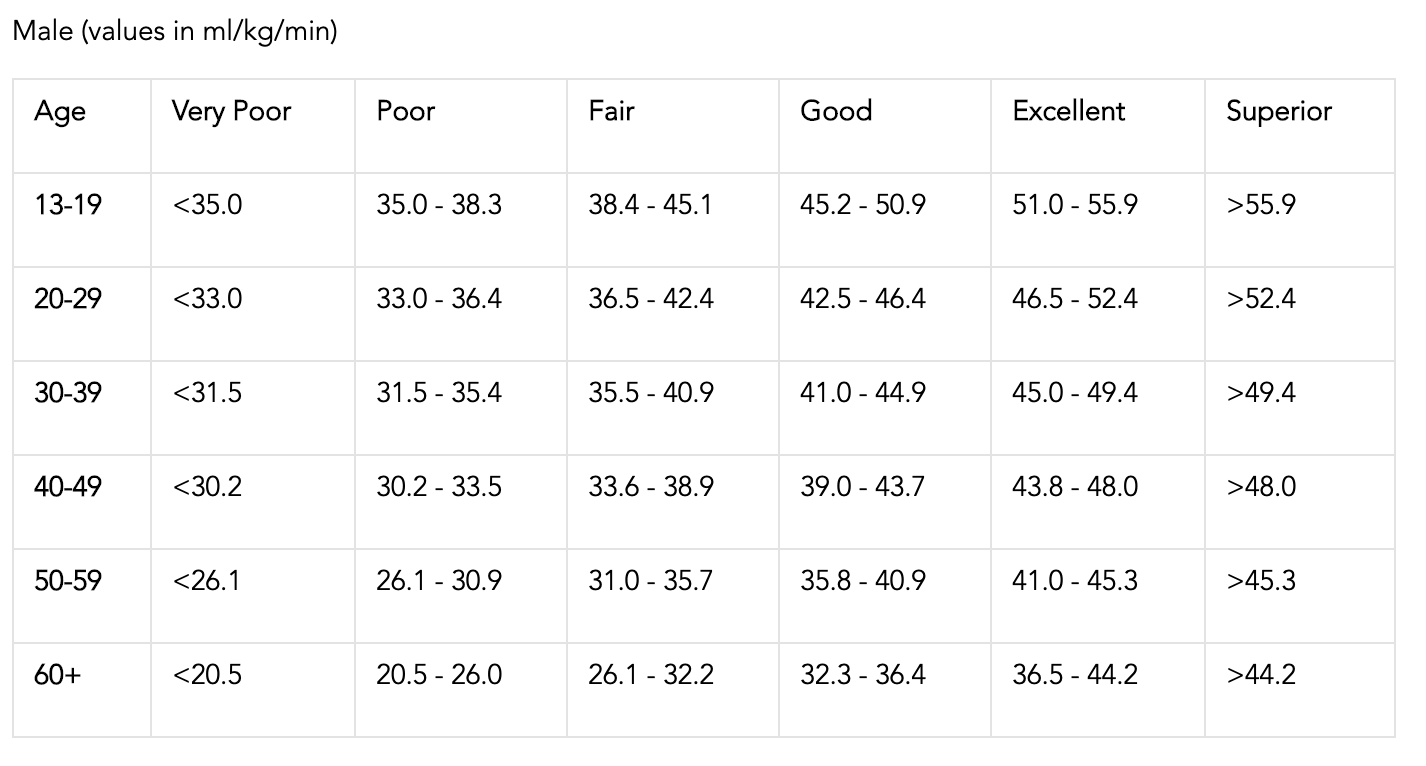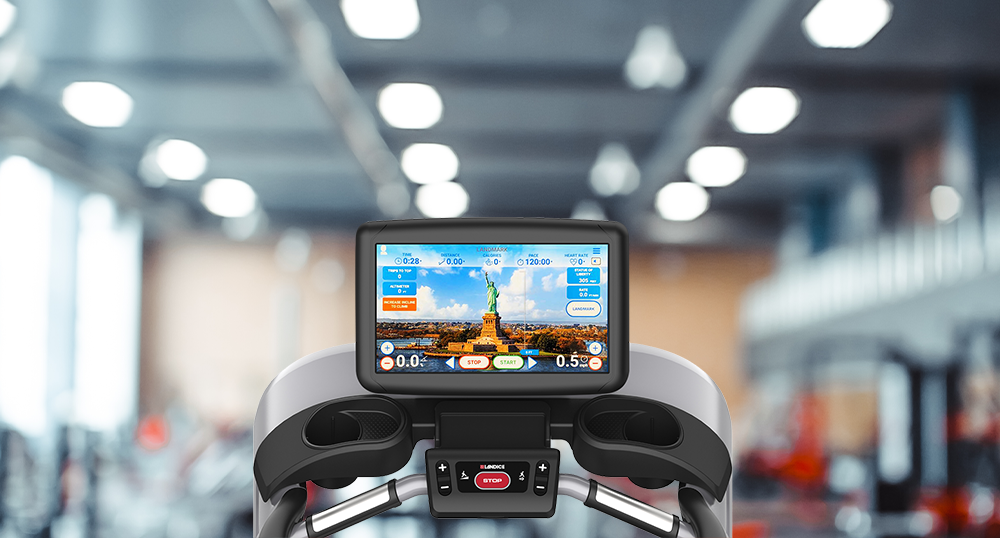VO2 Max
August 22, 2020
If you have heard of VO2 Max or have scene it on your sports watch and are scratching your head as to what it means and measures, you're not alone.
Most professional athletes and fitness experts are familiar with V02 max. But, for the average person, especially those with little to no background in fitness sciences, VO2 max seems perplexing.
And to add to that confusion, trying to read VO2 Max charts without understanding what the different numbers actually means may seem like a foreign language.
Let's try and explain the mystery behind this term and how you can do your own measurements on a treadmill.
What is VO2 MAX?
The VO2 Max is the maximum volume of oxygen that a person can use during exercise.
Also known as “maximal oxygen consumption,” “peak oxygen intake,” and “maximal oxygen uptake,” VO2max is the metric that best describes your personal cardiorespiratory and aerobic fitness level.
It gauges the capacity of your body to utilize fuel (oxygen) when exercising; so, the higher your VO2 Max score, the longer you can run, jump, row, swim, bike, etc.
VO2 Max is measured in liter/minute, (L/min), or milliliters/minute per kilogram of body weight, (mL/min/kg).
- The V in VO2 Max stands for volume and relates to volume rate per minute.
- The O2 in VO2 is the chemical name for oxygen.
- Max is simply maximum, or maximal.
Your VO2 max is made up of three main components:
- Lung capacity & heart volume. The greater your lung capacity, the more oxygenated blood your heart can pump, and the higher your VO2Max score.
- Capillary delivery. The more oxygenated blood that can reach your muscles, the higher your aerobic fitness score.
- Muscle efficiency. The better your muscles are at utilizing oxygen from your blood, the better your VO2 max reading.
V02 max testing is the gold standard of cardiovascular fitness. It’s also the most reliable indicator of aerobic endurance. Figuring out your current cardio fitness score helps you understand your fitness level as well as how to improve it. It also helps you decide your training pace, and it’s an excellent way to monitor your fitness progress.
Factors Affecting VO2 Max
This number is affected by many factors, e.g., heredity, training, age, gender, and body composition.
Age & Aerobic Capacity
As you get older, your VO2 max starts to decline. Most people reach their peak around their late 20’s or early 30s. Then, it starts to drop by roughly 10 percent per decade.
Gender and VO2 Max
Men have a higher V02 max (roughly 15-30%) than women thanks to physiology. The volume of blood your heart can pump determines in part your aerobic capacity.
Heredity
Genetics may account for as much as 10 to 30 percent of your VO2 Max. Many genetic factors impact your VO2max including muscle fiber composition, muscle mass, body size, aerobic enzyme levels, and mitochondrial density.
Altitude and VO2 max
Your VO2 Max decreases the less oxygen available to consume at higher altitudes. That’s why you’ll typically have a 5 percent reduction in the cardio fitness score for every 5,000 feet gained in altitude.
Training Status & V02 Max
Training drastically influences your cardio fitness score. The exact extent of the impact varies greatly, but V02 max can be improved by up to 10 to 20 percent depending on the individual’s fitness level, fitness background, and training program.
Importance of VO2 Max
Research has reported that the VO2 Max has a drastic impact on your lifespan. A low score has been correlated with higher risks of cardiovascular disease, according to the American Heart Association (AHA).
People with a low VO2 Max are also more to prone breast, lung, and gastrointestinal cancers, according to research.
V02 max matters a lot. But when it comes to reaching your performance goals, VO2max is only one half of the equation—the other half being efficiency. These include skill training, proper technique, mental preparation, psychological profile, diet, lactate threshold training, etc.
This means that two runners with similar V02 Max scores can have significantly different performances based on how they use oxygen during exercise.
A runner with perfect technique and training plan will be able to run faster and farther than their competitor with bad form and inconsistent training, even with the same VO2 Max.
That’s why a lot of personal trainers and scientists are hesitant about measuring VO2 Max as part of a tracking effort for endurance athletes. It doesn’t tell the whole story, period.
VO2 Max Measurements
The only reliable and bullet-proof way to get an ACTUAL reading of V02 Max is by taking the test in an exercise laboratory — you know, the ones with the person wearing a mask on their face.
Submaximal V02 Max tests are not as accurate nor reliable than those performed in a laboratory setting, but they’re still a useful way to determine your VO2 max levels.
The Cooper Method
The Cooper 12-minute run Test is widely used by coaches and fitness enthusiasts as it requires little equipment, and it offers a rough yet very reliable estimate of V02Max. This method developed by Dr. Kenneth Cooper, a leading authority on aerobic fitness and exercise science as a way to measure the VO2Max of military staff.
The next two VO2 Max charts show the ideal levels of fitness for reducing your risk of cardiovascular diseases, according to research from the Cooper Institute.

The Astrand Treadmill Test
First designed by Per-Olof Astrand in the 50’s, the Astrand treadmill test is another useful assessment of VO2 max readings.
The procedure is also simple. You simply maintain a steady running speed with a 2.5 percent increase in gradient every two minutes until exhaustion instead of running as fast as you can for the given duration.
To perform the Astrand test, you’ll need
- A treadmill with adjustable speed and incline
- A stopwatch or clock
- An assistant to record the time.
The VO2 Max Testing Protocol
Set the treadmill at five mph (or eight km). Run at this speed for three minutes with no incline, then increase the incline to 2.5 percent while maintaining the same speed.
Every two minutes thereafter, increase the incline by 2.5 percent but keep your running pace the same, until you reach exhaustion.
Once you can no longer keep it up, record your time expressed in minutes and fractions of a minute. For example, if you reached total exhaustion after 15 minutes and 45 seconds, then you record 15.75 ( 15 mins + 60/45 seconds).
Scoring The VO2 Max Test
To get your VO Max score, input your results into the following equation:
(Time x 1.44) + 14.99
For example, let’s say you’re a 27-year-old woman and were able to make it in 13 minutes and 30 seconds. That’s 13.50, so you’d calculate:
13.50 X 1.44= 19.44
19.44 + 14.99 = 34.43
Therefore, your aerobic capacity would be 34.43. This is also a good VO2 Max score. Here are charts for Female and Male measurements:

 Just keep in mind that V02 max is just one piece of the puzzle. You still need to eat clean, sleep well, work on your form, stay consistent, and all of that.
Just keep in mind that V02 max is just one piece of the puzzle. You still need to eat clean, sleep well, work on your form, stay consistent, and all of that.
.png?width=258&height=54&name=Landice_logo%20(1).png)



